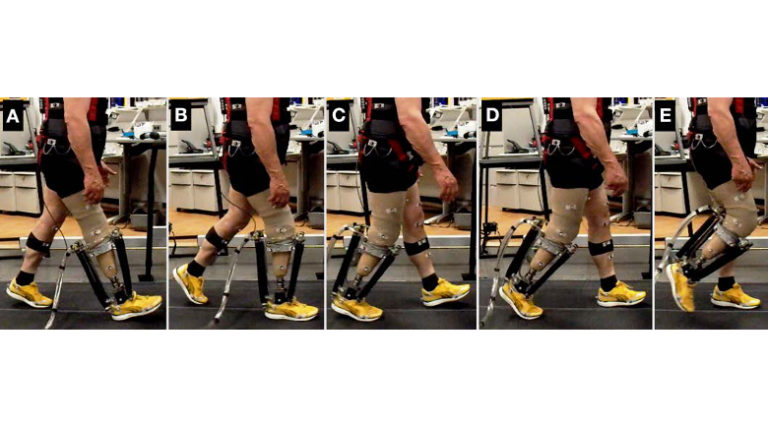
Lower limb amputees can use electrical activity from their residual muscles for myoelectric control of a powered prosthesis. The most common approach for myoelectric control is a finite state controller that identifies behavioral states and discrete changes in motor tasks. An alternative approach to statebased myoelectric control is continuous proportional myoelectric control where ongoing electrical activity has a proportional relationship to the prosthetic joint torque or power. To test the potential of continuous proportional myoelectric control for powered lower limb prostheses, we recruited five unilateral transtibial amputees to walk on a treadmill with an experimental powered prosthesis. Subjects walked using the powered prosthesis with and without visual feedback of their control signal in real time. Amputee subjects were able to adapt their residual muscle activation patterns to alter prosthetic ankle mechanics when we provided visual feedback of their myoelectric control signal in real time. During walking with visual feedback, subjects significantly increased their peak prosthetic ankle power (p = 0.02, ANOVA) and positive work (p = 0.02, ANOVA) during gait above their prescribed prosthesis values. However, without visual feedback, the subjects did not increase their peak ankle power during push off. These results show that amputee users were able to volitionally alter their prosthesis mechanics during walking, but only when given an explicit goal for their residual muscle motor commands. Future studies that examine the motor and learning capabilities of lower limb amputees using their residual muscles for continuous proportional myoelectric control are needed to determine the viability of integrating continuous high-level control with existing finite state prosthetic controllers.

